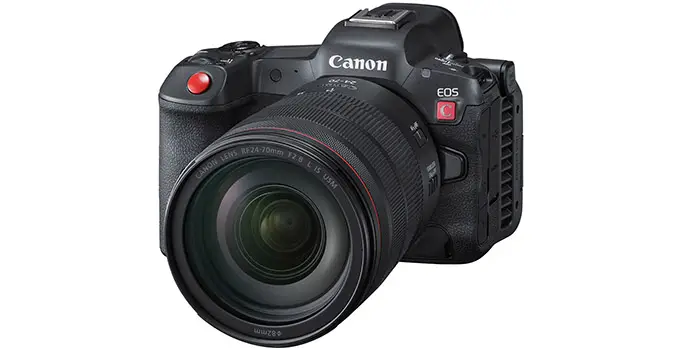When Canon released the R5 C it really did just look like an R5 with a fan added on. This meant better specs and more reliable video recording, though most of it stayed exactly the same. However, one key feature that was lost between the R5 and R5 C was in-body image stabilization.
To be fair to Canon, they did put a digital stabilization feature in the R5 C. The guys at ProAV TV took a much closer look at this particular aspect of the cameras and put them in a head-to-head test. If you want to see just how much this change matters you should check this out.
Cinema cameras are somewhat opposed to the idea of in-body stabilization. The reasons for this are based around high-end professional workflows where you likely have and want more control over the stabilization and camera movement by using tools such as gimbals and sliders.
However, when we get to cameras that sit in between the two worlds, like the R5 C, we end up with manufacturers making a decision one way or the other even though there is a strong point to be made for each side.
In the video, they are planning on testing which situations are better to have IBIS and which settings might prefer a non-stabilized sensor. They matched up the lenses as best they could by using two admittedly different zoom lenses but set to the same focal length. Then they mounted both up to the same exact rig so that it is as equal as possible.

Image Credit: Canon
Most of the comparisons show just how good in-body stabilization has become. Digital IS does actually work well in some ways. One handheld but static shot showed how potential warping in the corners from the movement of the sensor can be distracting and almost increase the appearance of shake while digital IS keeps things relatively smooth.
Next, a shot taken while walking shows off both digital and optical systems have weaknesses. The R5’s optical system is more stable, especially if you are focusing in on a subject. However, the digital system – though jumpy – has a degree of naturalness to it from not being physical at all.

Image Credit: Canon
One place where they believe that in-body stabilization is at a disadvantage is when mounted in a car. The reason for this is a proper mount to the car is locked in to the car itself and stays very stable.
With the R5 you are getting extra movement from the IBIS system trying to correct any motion, even though it would be stable relative to the car itself. This is also an impossible task and will show a jelly effect.
It is surprising that there isn’t a clear winner. A lot of people claim that everything should have IBIS, but in these tests there are clearly some times when IBIS isn’t going to be giving you a huge advantage.
What’s your take? Do you miss having IBIS on the R5 C or are you fine without it?
[source: ProAV TV]
Order Links:
Disclaimer: As an Amazon Associate partner and participant in B&H and Adorama Affiliate programmes, we earn a small comission from each purchase made through the affiliate links listed above at no additional cost to you.




